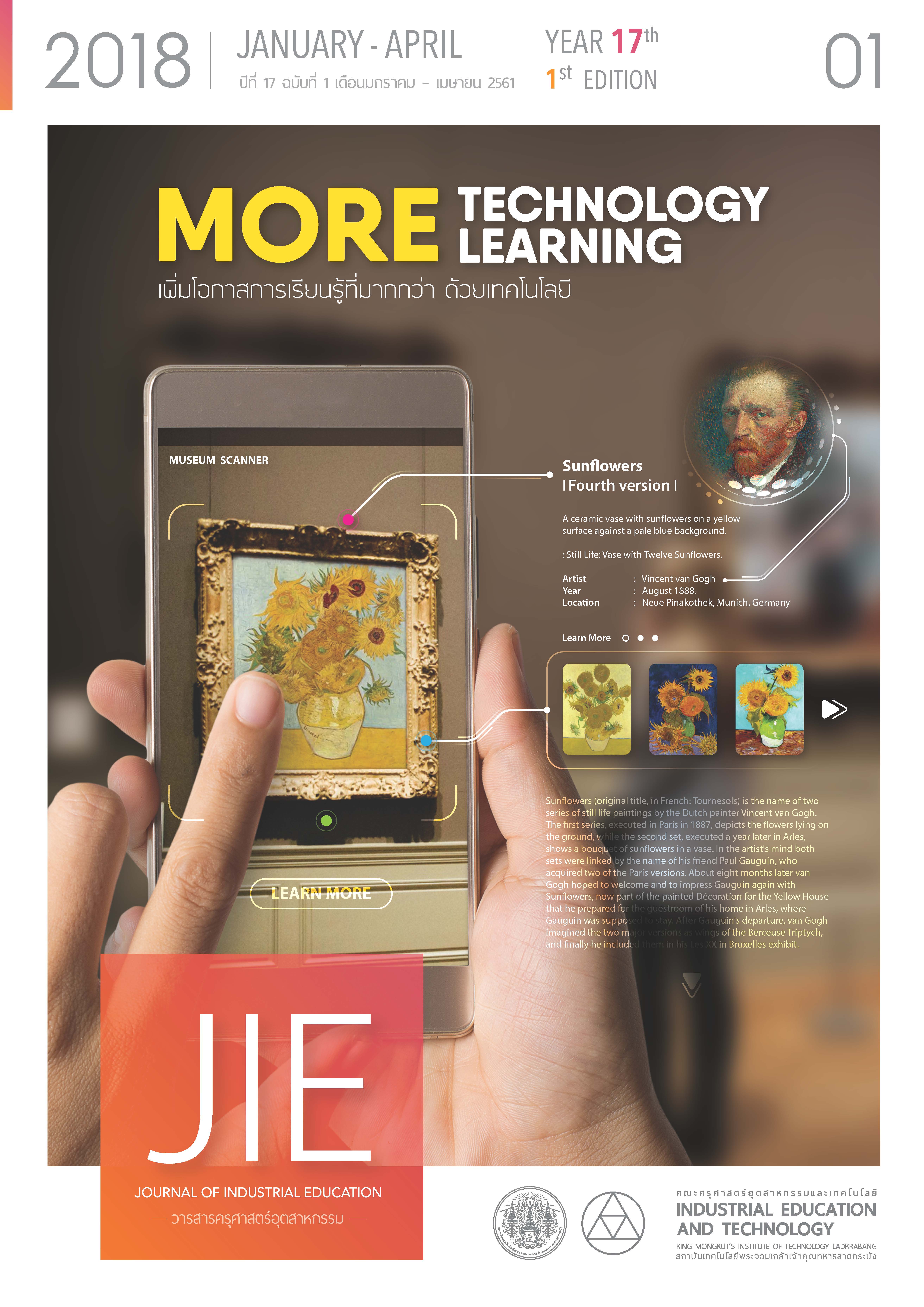ความท้าทายของการสอนชั้นเรียนขนาดใหญ่ในรายวิชาความรู้พื้นฐานด้าน เทคโนโลยีสารสนเทศในสิ่งแวดล้อมของการเรียนแบบผสมผสาน
คำสำคัญ:
ชั้นเรียนขนาดใหญ่, การเรียนแบบผสมผสาน, ความรู้พื้นฐานด้านเทคโนโลยีสารสนเทศ, การเรียนการสอนบทคัดย่อ
การจัดการชั้นเรียนขนาดใหญ่ยังเป็นประเด็นวิจัยที่น่าสนใจ โดยเฉพาะการจัดการเรียนการสอนในรายวิชาพื้นฐานสำหรับนักศึกษาชั้นปีที่ 1 ที่เพิ่งเข้ามาศึกษาในมหาวิทยาลัย งานวิจัยนี้มีวัตถุประสงค์เพื่อ (1) วิเคราะห์ความพึงพอใจของกิจกรรมการเรียนการสอนในรายวิชาความรู้พื้นฐานด้านเทคโนโลยีสารสนเทศ ในสิ่งแวดล้อมการเรียนแบบผสมผสาน (2) ศึกษาปัญหาการเรียนการสอนในชั้นเรียนขนาดใหญ่ในรายวิชานี้ (3) นำเสนอวิธีการแก้ปัญหาเพื่อปรับปรุงการเรียนการสอนในชั้นเรียนขนาดใหญ่ตามความคิดเห็นของนักศึกษาในชั้นเรียนนี้ ข้อมูลที่ใช้ในการวิเคราะห์รวบรวมจาก 2 แหล่งข้อมูลคือ (1) คะแนนการสอบกลางภาคและปลายภาค (2) แบบสอบถาม ซึ่งทำการสำรวจก่อนสอบปลายภาค นักศึกษาจำนวน 120 คนให้ความร่วมมือในการตอบแบบสอบถามเพื่อแสดงความคิดเห็นเกี่ยวกับการเรียนการสอนในชั้นเรียนขนาดใหญ่สำหรับรายวิชาความรู้พื้นฐานด้านเทคโนโลยีสารสนเทศ ผลการตอบแบบสอบถามถูกวิเคราะห์ทั้งในเชิงปริมาณและคุณภาพ ระดับความพึงพอใจในกิจกรรมการเรียนรู้ถูกจัดกลุ่มและคำนวณเป็นค่าร้อยละ ความคิดเห็นของนักศึกษาต่อปัญหาและข้อเสนอแนะในการแก้ปัญหาได้รับการวิเคราะห์ในเชิงคุณภาพ ผลของการวิจัยพบว่านักศึกษาส่วนใหญ่พึงพอใจกับกิจกรรมที่เกี่ยวข้องกับเทคโนโลยี เช่น การปฏิบัติการในห้องคอมพิวเตอร์ ปัญหาหลักของชั้นเรียนขนาดใหญ่คือเสียงดัง ซึ่งเกิดจากจำนวนนักศึกษาที่มากทำให้ไม่สามารถระบุคนที่พูดเสียงดังได้ และความเข้าใจผิดทางด้านวัฒนธรรม นักศึกษาเสนอวิธีการแก้ปัญหาในชั้นเรียนขนาดใหญ่โดยการเพิ่มการโต้ตอบระหว่างผู้เรียนและผู้สอน เพิ่มการเรียนแบบไม่เป็นทางการ กระตุ้นการเข้าชั้นเรียน ลดสภาวะการไม่เปิดเผยตัวตนของผู้เรียน และจัดกลุ่มเรียนตามความสามารถของผู้เรียน
เอกสารอ้างอิง
[2] Haddad, C. 2006. Practical Tips for Teaching Large Classes: A Teacher’s Guide. https://www2.unescobkk.org/elib/publications/095/Teaching_Large_Classes.pdf
[3] AUTC (Australian University Teaching Committee) 2001. Teaching Large Classes. https://www.tedi.uq.edu.au/largeclasses/
[4] Jungic, V., Kent, D. and Menz, P. 2006. Teaching large math classes: three instructors, one experience. International Electronic Journal of Mathematics Education, 1(1), p. 1-15.
[5] Carpenter, J.M. 2006. Effective teaching methods for large classes. Journal of Family & Consumer Sciences Education, 24(2), p. 13-23.
[6] Center for Teaching Excellence, University of Maryland 2008. Large Classes: A Teaching Guide. https://www.cte.umd.edu/library/teachingLargeClass/guide/index.html
[7] Plump, C. and LaRosa, J. 2017. Using Kahoot! in the Classroom to Create Engagement and Active Learning: A Game-Based Technology Solution for eLearning Novices, Management Teaching Review, 2(2), p. 151-158.
[8] Colbert, J.T., Olson, J.K. and Clough, M.P. 2007. Using the web to encourage student-generated questions in large-format introductory biology classes. CBE- Life Sciences Education, 6(1), p. 42-48.
[9] Marsh II, G.E. and McFadden, A.C. 2009. Barrier to Blended Instruction: Adapting Conventional Instruction for Large Classes. https://www.westga.edu/~distance/ojdla/winter64/marsh64.htm
[10] Samson, P.J. 2010. Deliberate Engagement of Laptops in Large Lecture Classes to Improve Attentiveness and Engagement. Computers in Education, 20(2), p. 1-19.
[11] UNESCO. 2006. Positive Discipline in the Inclusive, Learning-Friendly Classroom – A Guide for Teachers and Teacher Educators. https://www2.unescobkk.org/elib/publications/086/Pos_Dis-final.pdf
[12] Torrisi-Steele, G. and Drew, S. 2013. The literature landscape of blended learning in higher education: the need for better understanding of academic blended practice. International Journal for Academic Development, 18(4), p. 371-383.
[13] Davis, B.G. 2002. Quizzes, Tests, and Exams, University of California, Berkeley. https://teaching.berkeley.edu/bgd/quizzes.html
[14] Hancock, T. 1996. Effects of class size on college student achievement. College Student Journal, 30(2), p. 479-481.
[15] Lau, W.W.F. and Yuen, A. H.K. 2009. Exploring the effects of gender and learning styles on computer programming performance: implications for programming pedagogy. British Journal of Educational Technology, 40(4), p. 696–712.
[16] Visano, B.S. 2003. Teaching Large Classes. CORE Newsletter, 13(1).
[17] Cuseo, J. 2007. The empirical case against large class size: Adverse effects on the teaching, learning, and retention of first-year students. Journal of Faculty Development, 21, p. 5–21.
[18] Mulryan-Kyne, C. 2010. Teaching large classes at college and university level: Challenges and opportunities. Teaching in Higher Education, 15(2), p. 175−185.
[19] Andersson, R. and Torgny, R. 2000. Encouraging Students in Large Classes. The thirty-first SIGCSE technical symposium on Computer science education, March 8-12, in Austin, Texas.
[20] Preston, J.A. and Shackelford, R. 1998. A System for Improving Distance and Large-Scale Classes. The 6th annual conference on the teaching of computing and the 3rd annual conference on Integrating technology into computer science education: Changing the delivery of computer science education, August 18-28, in Dublin, Ireland.
[21] Kay, D. G. 1998. Large introductory computer science classes: strategies for effective course management. The twenty-ninth SIGCSE technical symposium on Computer science education, March 1998.
[22] The Schreyer Institute for Teaching Excellence 2007. Large Class FAQ: Student Involvement/Participation. https://www.schreyerinstitute.psu.edu/pdf/Large_Class_FAQ_Student_Involvement.pdf
[23] Ramsden, P. 1998. Learning to Lead in Higher Education. London: Routledge.
ดาวน์โหลด
เผยแพร่แล้ว
รูปแบบการอ้างอิง
ฉบับ
ประเภทบทความ
สัญญาอนุญาต
"ข้อคิดเห็น เนื้อหา รวมทั้งการใช้ภาษาในบทความถือเป็นความรับผิดชอบของผู้เขียน"



